Best PHP Header Function Guides to Buy in December 2025
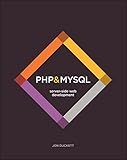
PHP & MySQL: Server-side Web Development


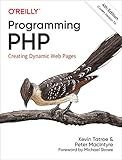
Programming PHP: Creating Dynamic Web Pages


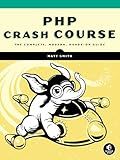
PHP Crash Course: The Complete, Modern, Hands-On Guide



Full Stack Web Development For Beginners: Learn Ecommerce Web Development Using HTML5, CSS3, Bootstrap, JavaScript, MySQL, and PHP



Front-End Back-End Development with HTML, CSS, JavaScript, jQuery, PHP, and MySQL



Learning PHP, MySQL & JavaScript: A Step-by-Step Guide to Creating Dynamic Websites (Learning PHP, MYSQL, Javascript, CSS & HTML5)


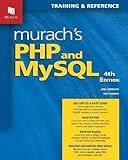
Murach's PHP and MySQL (4th Edition)


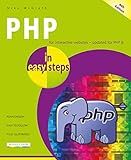
PHP in easy steps: Updated for PHP 8


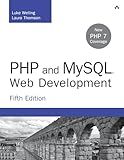
PHP and MySQL Web Development (Developer's Library)



PHP Programming for Beginners: Programming Concepts. How to use PHP with MySQL and Oracle databases (MySqli, PDO)


In PHP, the header() function is used to send HTTP headers to the browser or client. It is often used to perform redirects or set content type headers.
When the header() function is used to redirect the user to a different page, any variables that were set before the header() call will not be preserved after the redirect. This is because the redirect causes a new page to be loaded, effectively starting a new PHP script execution.
However, there are a few ways to save variables before a redirect and retrieve them on the redirected page:
- Using Sessions: PHP provides a session mechanism to store data across multiple requests. You can store the variables in session variables before the header() call and retrieve them on the redirected page using the $_SESSION superglobal array.
Example:
// Before the redirect session_start(); $_SESSION['my_variable'] = $myValue; header("Location: redirected_page.php"); exit();
// On the redirected page session_start(); $myValue = $_SESSION['my_variable'];
- Using Cookies: Cookies are another way to store data on the client-side. You can set a cookie with the desired variables before the header() call and retrieve them on the redirected page using the $_COOKIE superglobal array.
Example:
// Before the redirect setcookie("my_variable", $myValue, time()+3600); // Set cookie for 1 hour header("Location: redirected_page.php"); exit();
// On the redirected page $myValue = $_COOKIE['my_variable'];
- Using Query Parameters: If the redirected page is within the same domain, you can pass the variables as query parameters in the URL. The redirected page can then access these parameters using the $_GET superglobal array.
Example:
// Before the redirect $redirectUrl = "redirected_page.php?my_variable=" . urlencode($myValue); header("Location: " . $redirectUrl); exit();
// On the redirected page $myValue = $_GET['my_variable'];
Remember to handle security concerns when using cookies and query parameters, as they can be modified by the user.
How to send HTTP response code using headers in PHP?
In PHP, you can send an HTTP response code using the header() function. The function allows you to set a response code and any other headers you want to include in the response.
Here's an example of how to send a specific HTTP response code:
header("HTTP/1.1 404 Not Found"); // Set the response code to 404 Not Found
You can replace 404 with any valid HTTP response code, such as 200, 301, 500, etc.
Additionally, you can send multiple headers in a single header() function call by separating them with newlines or using an array of headers.
Here's an example of sending multiple headers along with the response code:
header("HTTP/1.1 404 Not Found\nContent-Type: application/json"); // Set response code and Content-Type header
Make sure to call the header() function before any actual output is sent to the browser, as headers must be sent before the response body.
How to prevent headers from being sent in PHP?
To prevent headers from being sent in PHP, you can use the output buffering technique. By buffering the output, you can prevent any headers from being sent until you explicitly send them.
You can achieve this by using the following steps:
- Enable output buffering at the beginning of your PHP script using the ob_start() function.
- Place all your PHP code and HTML content between ob_start() and ob_end_flush() functions to capture the output.
- Make sure to include the ob_end_flush() function at the end to flush the output and send it to the browser.
By using output buffering, you can delay the sending of headers until you explicitly invoke them using the header() function or any other function that sends headers.
Note: It's important to place the output buffering functions (ob_start(), ob_end_flush()) at the very beginning and end of your script, respectively, before any content is sent to the browser.
What is the role of the content-length header in PHP?
The Content-Length header in PHP is used to specify the size of the HTTP message body in bytes. It is typically used when sending or receiving POST requests or when accessing files via HTTP.
The Content-Length header informs the recipient of the exact size of the data being sent, which allows it to accurately determine when the complete message has been received. This is important because it helps prevent buffer overflow or truncation issues that may occur if the recipient expects a different amount of data than what is actually being sent.
In PHP, the Content-Length header can be set using the header() function, like this:
header('Content-Length: ' . filesize($filePath));
This example sets the Content-Length header to the size of a file being sent as a response, ensuring that the receiving end knows how much data to expect.
Overall, the Content-Length header plays an important role in ensuring proper data transmission and is commonly used in PHP when dealing with HTTP requests and responses.
How to set the charset using headers in PHP?
To set the charset using headers in PHP, you can use the header() function. Here's how you can do it:
In this example, we are setting the charset to UTF-8. You can replace utf-8 with any other charset you want to use.
Make sure to place this code at the very beginning of your PHP file, before any output is sent to the browser. Headers must be sent before any content.
What is the syntax for setting multiple headers in PHP?
To set multiple headers in PHP, you can use the header() function repeatedly, one for each header you want to set. Here is the syntax:
header("Header1: Value1"); header("Header2: Value2"); // Add more headers as needed
Each header() call takes a string as an argument in the format "Header: Value", where "Header" is the name of the header you want to set and "Value" is the value you want to assign to that header.
Make sure to call header() before any actual output is sent to the browser, otherwise, you may encounter an error.
How to set the expiration time for cookies using the header function in PHP?
To set the expiration time for cookies using the header function in PHP, you need to provide the expiry time in Unix timestamp format. Here's an example:
In this example, a cookie named "cookie_name" is set with the value "cookie_value". The expiry time is set to 1 day from the current time using the time() function.
Note that the header function should be called before any other output to the browser. Additionally, the setcookie function is used to set the cookie and requires the expiry time as the third parameter.
